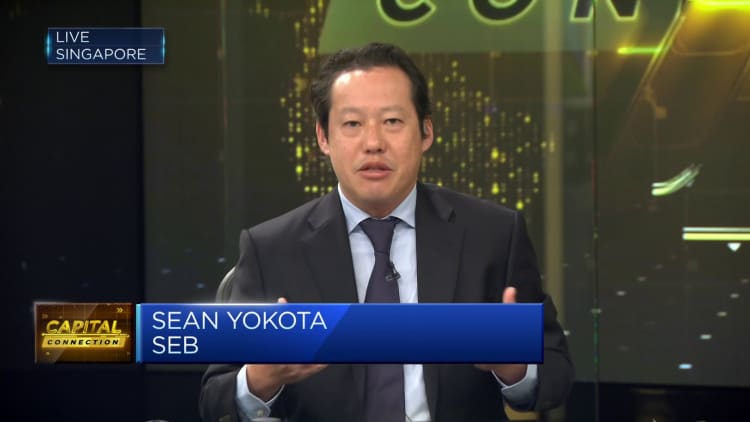Stock markets are ignoring a “laundry list” of potential risks in their recent bull run, and a big downturn could be incoming, according to Julian Howard, investment director for multi-asset solutions at GAM Investments.
Despite the risks associated with a steep rise in interest rates over the past 15 months, tech stocks particularly led the charge so far this year, as investors rushed to gain exposure to the AI boom.
related investing news
The Nasdaq 100 closed the Friday session up 33% on the year, while the S&P 500 is up more than 11% and the pan-European Stoxx 600 has added just under 9%.
Yet in light of the latest round of economic data, economists are beginning to increase the probability of further interest rate hikes from the U.S. Federal Reserve, with the U.S. economy and jobs market still resilient, while core inflation is proving stickier than expected.
Howard told CNBC’s “Squawk Box Europe” on Monday that, in light of this risk, the Nasdaq was “very expensive” at the moment, and that now is the time for investors to “wait it out rather than engaging heavily in this market.”
“There’s this laundry list of problems, and interest rates and inflation haven’t gone away. The debt ceiling is done, and I think there’s a sense that, actually, the markets need to refocus again on inflation and rates,” Howard said.
“The U.S. consumer is pretty ambivalent about inflation, it kind of expects higher inflation now, and that’s dangerous because that entrenches higher inflation itself, because obviously expectations lead to higher inflation.”

Further increases in borrowing costs would also raise the discount rates — a metric used by Wall Street to value stocks by figuring out the value of future earnings. This would not bode well for the tech stocks that constitute much of the recent driving force behind U.S. equity markets, as higher discount rates typically lead to lower future cash flow.
The Fed has raised benchmark interest rates 10 times since March 2022 in a bid to fight stubbornly high inflation.
Some Fed policymakers had in recent weeks expressed willingness to pause the cycle of rate hikes at the central bank’s June meeting, and the market is now pricing around an 80% chance of this outcome, according to the CME Group FedWatch tool. However, several Fed officials and economists have hinted that further monetary tightening could be needed later in the year.
“That AI tech trade started to fade in the latter half of last week, and I think that could continue, because if you think about it, long duration assets like technology stocks, they are the most sensitive to the price of money, to the prevailing discount rate,” Howard said.
“If that discount rate starts to tick up because investors feel that, actually, the Fed isn’t done after all, then we could have quite a sizable correction, so we’re just a little bit cautious there in terms of the next few weeks and months.”

GAM sees a bleak longer-term macroeconomic picture across major economies, with secular stagnation as a base case. It believes the “Goldilocks” environment for stocks that has prevailed since October is no longer sustainable.
Though at odds with much of the consensus on Wall Street, Morgan Stanley also predicted in a research note last week that slower real and nominal U.S. growth will lead to sharp downgrades to earnings forecasts, which will slam the brakes on the stock rally stateside.
The Wall Street giant expects earnings-per-share to be around 16% below both last year’s results and the current 2023 consensus, before recovering in 2024.
Morgan Stanley strategists said a variety of “big-picture” indicators continued to recommend for investors to adopt a “defensive posture.”
“Our U.S. cycle indicator, bank lending conditions, the yield curve, commodity prices, indices of leading economic indicators, and the unemployment rate all suggest worse-than-average forward equity returns, and better-than-average returns for high grade bonds,” they said.
Read the full article here













